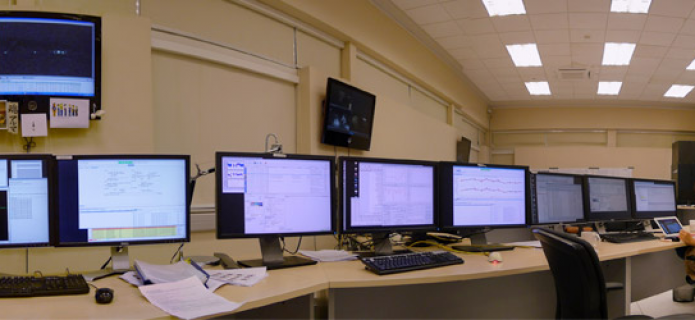ALMA Early Science Period Extended
Following the very busy period of the ALMA inauguration in March 2013, and as part of the activities towards the completion of the observatory later this year, the ALMA team has been engaged in a process of fine tuning and optimising ALMA for smoother science operations.
Excellent progress has been made both with verification of the scientific performance of some of the advanced science observing modes, as well as with array stability and infrastructure enhancements. It has now been decided to resume Early Science observations at the end of June in order to deliver more data to the astronomers and further test the telescope’s performance. Observations made in this Early Science mode have already delivered outstanding discoveries [1], showing the unprecedented power of ALMA, even when still working at a fraction of its final capacity.
Before starting the next cycle of Early Science observations (Cycle 2), it has been decided to extend the current period (Cycle 1) until the end of May 2014, in order to complete the largest possible fraction of the top science priority programs proposed by astronomers around the world. This will also ensure that the data for teams with ongoing projects are delivered.
The call for Cycle 2 Early Science proposals will be made to astronomers in October 2013 with a deadline for proposal submission in early December 2013.
Notes
[1] Earlier examples of ALMA research are described in our press releases. [back]
More Information
The Atacama Large Millimeter/submillimeter Array (ALMA), an international astronomy facility, is a partnership of Europe, North America and East Asia in cooperation with the Republic of Chile. ALMA is funded in Europe by the European Southern Observatory (ESO), in North America by the U.S. National Science Foundation (NSF) in cooperation with the National Research Council of Canada (NRC) and the National Science Council of Taiwan (NSC) and in East Asia by the National Institutes of Natural Sciences (NINS) of Japan in cooperation with the Academia Sinica (AS) in Taiwan. ALMA construction and operations are led on behalf of Europe by ESO, on behalf of North America by the National Radio Astronomy Observatory (NRAO), which is managed by Associated Universities, Inc. (AUI) and on behalf of East Asia by the National Astronomical Observatory of Japan (NAOJ). The Joint ALMA Observatory (JAO) provides the unified leadership and management of the construction, commissioning and operation of ALMA.
Contacts:
Valeria Foncea
Education and Public Outreach Officer
Joint ALMA Observatory
Santiago, Chile
Tel: +56 2 2467 6258
Cell: +56 9 7587 1963
E-mail: [email protected]
Masaaki Hiramatsu
Education and Public Outreach Officer, NAOJ Chile
Observatory
Tokyo, Japan
Tel: +81 422 34 3630
E-mail: [email protected]
Richard Hook
Public Information Officer, ESO
Garching bei München, Germany
Tel: +49 89 3200 6655
Cell: +49 151 1537 3591
Email: [email protected]
Charles E. Blue
Public Information Officer
National Radio Astronomy Observatory
Charlottesville, Virginia, USA
Tel: +1 434 296 0314
Cell: +1 434.242.9559
E-mail: [email protected]
